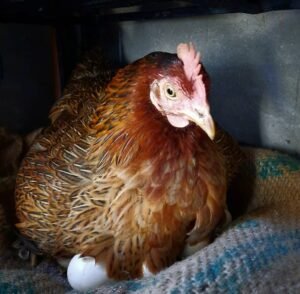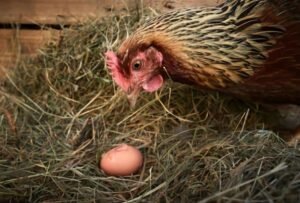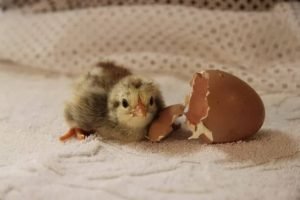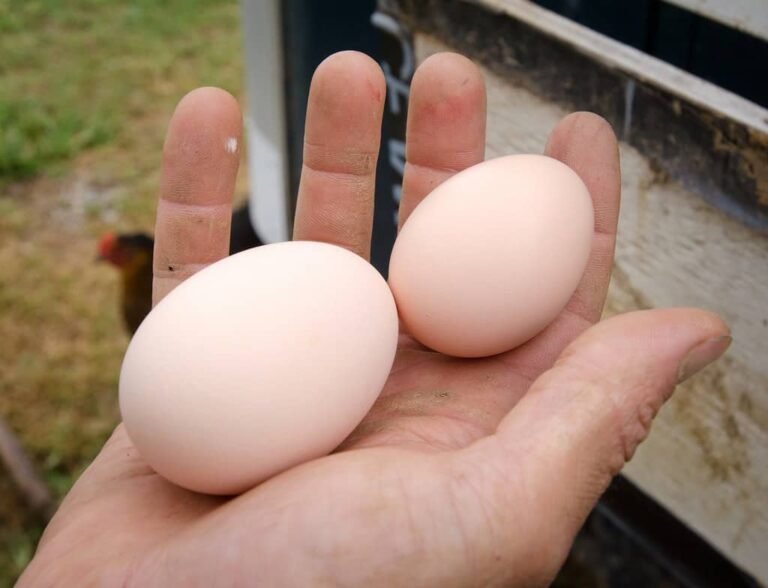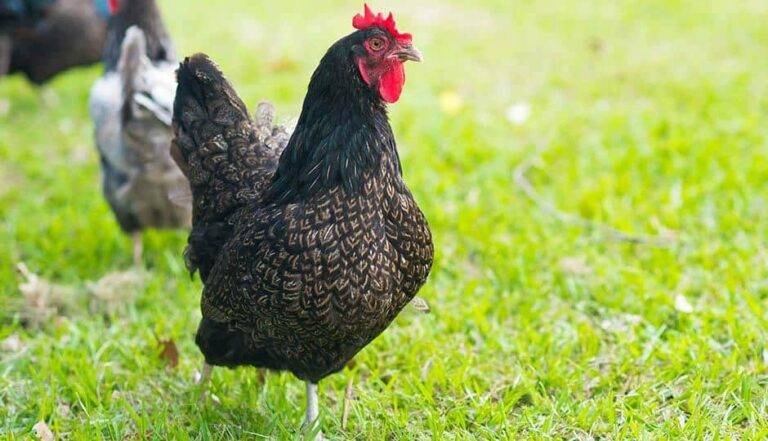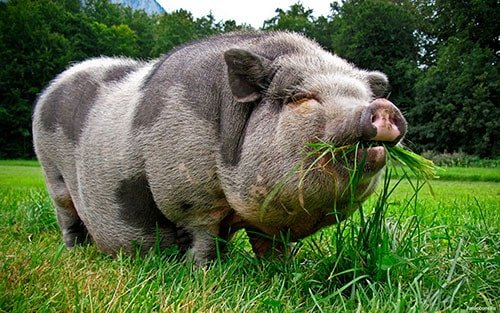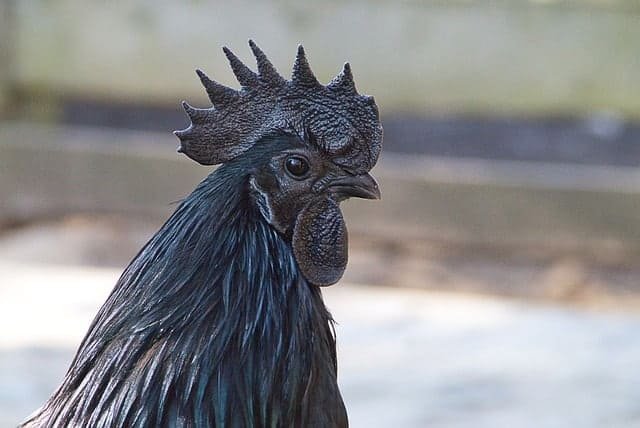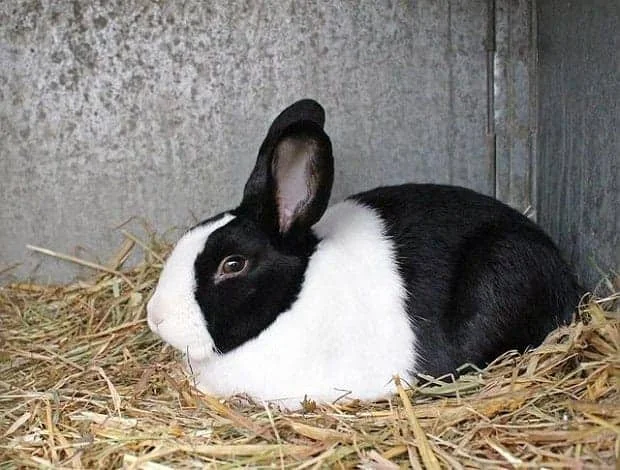Serama Chicken – Characteristics, Origin, Breed Info and Lifespan

Clicking on this link suggests you need information about the royal gracious chicken by the name of Serama.
Look no further, here’s a complete guide on all you need to know.
With its full breast “chest out” in the sun, many often regard them as the chicken version of Dolly Parton or Arnold Schwarzenegger.
The Serama chicken has been in existence for the past 50 years.
And history has it that this ornamental bird is a huge attraction to farmers.
Why?
That’s exactly what you will find out in this piece.
In this guide, you will discover the egg-laying ability, and the advantages, and disadvantages of having the Serama chicken.
Also, you will find out the peculiarities that make this breed of chicken different from the others.
You may also like to read this article about How to Start Poultry Farming for Beginners [The Complete Business Guide]
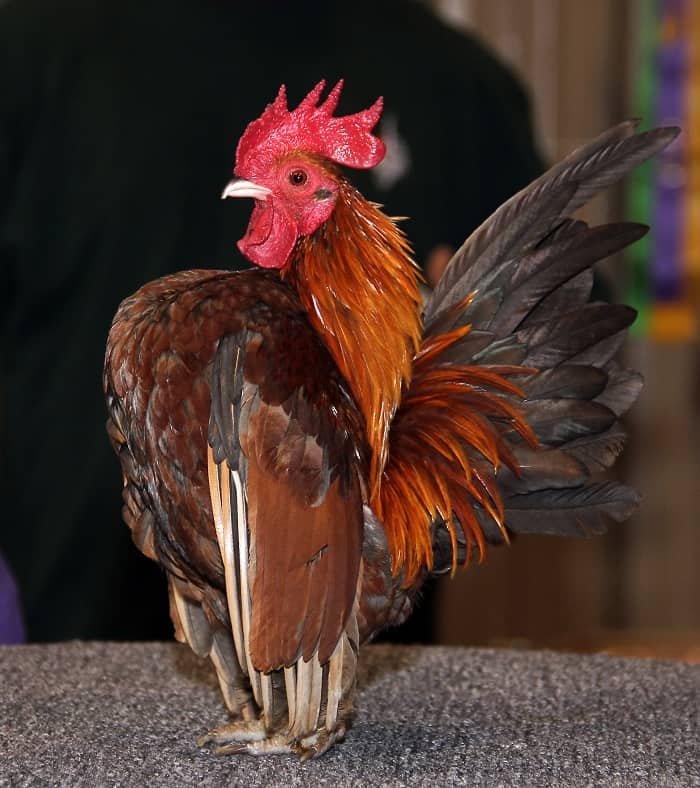
What is a Serama chicken?
A Serama chicken is a very small but mighty bird just like the Isa Brown chickens.
They possess a persona of a fearless warrior or toy soldier ready for battle at all times.
This demeanor makes them a huge attraction for shows and bird exhibits.
They are great competitors in beauty contests. And they always come home with the price.
Although they do not have a color variety, they have four classes: slim, ball, apple, and dragon.
Peculiar to the chicken breed is what we call the “Serama type or style”
This notion is used to describe a bloodline of a champion (e.g. Husin, Mat Awang).
Sometimes it can be in reference to their general shape, characteristics, or behavior (e.g. slim, submarine, and dragon).
What is the origin and history of Serama chickens?
The history of the Seramas can be traced to the Malaysian state of Kelantan.
There are many stories surrounding its invention. One of which is that Serama is a hybrid of Japanese and Malaysian bantams.
Others say the Serama chicken was derived from a gift of small chickens by the King of Thailand to a local sultan in ancient times.
Those small chickens were called “ayam katik” (pygmy chickens) and “ayam cantik” (pretty chickens).
However, these modern breeds of Seramas were attributed to the efforts of Wee Yean Een from Kelantan.
He named these chickens after Rama, the title of the Kings of Thailand.
The Serama chickens were first exhibited in 1990.
It fared so well until 2004 when they were affected by the Asian bird flu epidemic.
These birds do have a track record in scoring and judging for competitions in Malaysia.
Following this epidemic, the Seramas made it to the United Kingdom in 2004.
Some came from America while others were imported directly from Malaysia.
In 2005, the club “Serama Club of Great Britain” was formed by a small group of Serama owners and enthusiasts.
This was the first-ever Serama club in the UK. And with this, a standard for the Serama breed for the UK was established.
In 2008, the club was recognized officially by the Poultry Club of Great Britain.
However, in the U.S, Serama chickens are promoted by several organizations. One of which is “The Serama Council of North America”.
Serama being a show bird had its exclusive show in Baton Rouge, Louisiana known as the Cajun Classic in 2004.
In 2011, the American Poultry Association accepted this set of chicken breeds.
However, in early 2012, the American Serama Association was formed to help gain APA and ABA acceptance of more varieties of Serama chickens.
What are the characteristics of Serama chickens?
There are varieties of chickens in this world.
This particular factor makes it quite herculean to decipher which is which.
However, knowing the characteristics is just enough to solve this daunting task.
Below are some of the defining characteristics of the Serama chickens;
1. The Serama chickens have a human-like appearance:
If you’ve ever heard of the command “chest out”, that’s the picture that should come to mind when you want to imagine the Seramas.
Usually, when you view them from the side, they create a vase-like or wide ‘V’ shape outline.
These sets of chickens are characterized by their upright demeanor, full breast, vertical wings, and tail nearly touching the ground.
This look makes them resemble soldiers ready for war. No wonder the Malaysians describe them as brave warriors and archangel chickens.
2. They are the smallest breed of chicken in the whole wide world:
Typically, a Serama chicken will weigh under 500g.
You can find a Serama weighing 250g in its native Malaysia.
Do not confuse their small size to mean a Bantam variety.
All Seramas are naturally small in size.
Read this article to see the list of 15 Small Chicken Breeds Perfect for Pets and Homesteading (With Pictures)
3. They possess a graceful grandeur demeanor:
They say the Orpington chickens are royalties, but the Seramas seem to drag that title with them.
Now picture this.
When you see a Serama chicken, it will shake its wings and pose, take a walk in pride, and all reality.
Their head draws back to reveal their full-breasted chest.
As they lift their legs to walk, their neck and head show these vibrations similar to that of a pigeon.
These chickens are one of the royalties you will find on the farm.
4. The Seramas are Non-aggressive Birds:
Yes, they do not show any form of aggression.
Many refer to them as dual-character birds.
They are not aggressive yet they are very assertive.
The Serama chickens possess this confident bold stance yet are very calm and manageable.
This nature makes them easy to handle. And they are quite ideal for beginners.
5. Although petite in size, the Seramas have fairly large wings:
The wings of a Serama are a defining characteristic.
Usually, their wings are held in a vertical position clearing the ground and leaving their feet partially visible.
With the position of these wings, their shoulders are set high on the bird.
The secondary wings are moderately long and broad while the primaries are long of medium width.
6. The Seramas are single combed birds with small wattles:
The combs of the Serena chicken breed are single with 5 points. Usually, they’re medium-sized.
It’s placed on a head held in a position more than 90 degrees from the feet.
Also, the Serama combs are often straight smooth and free of foldings or any deformities.
And it always tends towards flyaway type.
Of course, their wattles are small in size. Just enough to complement their body size.
7. The Serama chickens are not color bred:
What does this mean?
Like most Asiatic breeds, the Seramas are not color bred in their native country. That means they do not have varieties.
In Malaysia, only normal feathered birds are accepted.
Also, their feathers must be held tight against their body and must not be lengthy or flowing.
Although in America and parts of Europe, other mutations have been birthed by crossing the other breeds.
Therefore, they can have a range of varieties but not in color and structure.
But they are not officially recognized.
8. Serama chickens share a similarity with Bantam breeds:
As earlier stated, Serama chickens are not Bantam breeds.
But when it comes to breeding and hatching eggs, they display this similarity with Bantam breeds of other chickens.
A Serama egg takes about 19 days to develop and hatch.
And after hatching, it takes about 16–18 weeks for the chicks to mature and begin laying eggs themselves.
9. They are pretty hardy birds:
Although they come from a tropical area, the Seramas exhibit a very hardy nature.
This doesn’t mean they should not be taken care of.
But it sure insinuates that they need special treatment during winter.
10. Seramas are high flyers:
Their weightless body makes it easy for them to fly like actual flying birds.
This attribute makes free-ranging not a good option because you will always have to go look for them in the next yard.
Table summarizing the Serama chicken breed information
| Skin color | White |
| Egg color | Light brown or white |
| Comb type | Single |
| Setter/Broody | Yes |
| Especially Docile | Yes |
| Use | Exhibition Show |
| Cold Hardiness | Hardy in winter |
| Conservation status | On the watch |
| Heat Tolerance | Tolerates heat very well |
| Also Known As | Ayam SeramaMalaysian Serama |
| Personality | Friendly, Easily Handled, Docile, Quiet |
| Country of origin | Malaysia |
| Standard | American StandardMalaysian Standard |
| Bears Confinement | Bears confinement well |
| Weight | Cockerels: 350 grams to 600 gramsHens: 325 to 500 grams Pullets:150 to 325 grams Chick: 150 grams |
| Varieties | Slim Ball Apple Dragon. |
Why choose Serama chickens?
It’s not out of place to love this Arnold Schwarzenegger kind of chicken.
But loving it is not all there is.
If you’re looking for reasons why this flock will be a good addition to the farm, then you have to read here carefully.
Why do you have to choose the Serama chickens?
Here’s why we love them;
1. They are inexpensive to keep:
Raring the Seramas wouldn’t be a big deal.
In fact, they are the perfect breed for beginners.
Also, feeding the Seramas totally does not cost much because they do not eat much.
Just a pound of feed in a month.
2. Serama chickens make good mothers:
If you’re looking for a broody chicken, then you need to tick this box for the Serama chicken in your checklist.
The Serama hens make really great moms.
They do not just lay their eggs and gear off like the New Hampshire breed, they hatch and care for their baby chicks.
3. They are a consistent egg-laying breed of chicken:
If you need that chicken that lays regardless of time and season, then the Seramas are a good choice.
Basically, they lay eggs all year round.
They do not have a particular laying season. However, they lay best from November to February.
4. Serama chickens mature early:
See the Serama chickens as a mini version of Australorp chickens.
They mature pretty fast.
These sets of chickens are ready to lay at 16-18 weeks. And of course, they are also good for meat then.

What are the disadvantages of having Serama Chickens?
This Bantam-looking variety of chicken wins the hearts of many during shows and exhibitions.
But if you want something more than awards and amazing-looking victorious pictures, then you need to know about the not-so-good features of the Serama chickens.
Below you will find out about the disadvantages of having a Serama chicken in your flock;
1. Serama chicks are susceptible to cold.
Cold temperatures do not favor the Serama chicks.
Because of their relatively small size, they are very susceptible to cold.
If the environment is not well warmed up, many of the Serama chickens will die as chicks.
And that’s not good for the business.
2. The molt everyday
Now, this doesn’t sound good.
During molting, birds lose their feathers and take up a new ones.
This process is stressful and consumes a lot of protein.
High protein consumption will mean fewer eggs and consuming more feed.
And that happens every day!!!
Are you ready for it?
3. Seramas do not breed true to size.
This is not so good.
There’s no certainty as to what you get out of the Serama eggs.
For the Cochin Chickens, you’re sure to get pretty large chicks regardless of time and season.
But for the Serama chickens, out of 10 eggs, one or two can be very small, two or three to be rather large and the rest can just have the normal size.
If you sell the chickens, then this is rather not good for the business.
4. Their eggs do not have a peculiar color.
Somehow this may be good but most times it’s not good.
Imagine a crate of eggs with varieties of colors.
The Serama chicken eggs have a wide range of colors. Some are pure white, others are deep brown in color.
And some have shades between them.
It’s never just the same.
5. The Serama chicken eggs are small.
Their petite nature and constant molting are some of the factors that affect how many eggs a chicken lays in a week.
And because the Serama chickens are not advantaged in weight and they continually molt, this results in some pretty small eggs.
It takes about five Serama eggs to equal the volume of one Grade “A” Large egg.
Now you understand!
Read this article to see the complete list of the Top 10 Chicken Breeds That Lay Large Eggs [With Pictures]
6. Some strains of Serama suffer from a lethal gene.
These strains that have this lethal gene must have inherited it from the Japanese bantams.
With this gene present, about one-quarter of the chicks will die in the shell.
This is so because the legs of the chick are too short to maneuver themselves into the hatching position.
So, they die.
Just a bit of advice, enquire from the breeder before you buy.
Else you’re going to have a hard time getting a larger flock of Serama chickens.
Frequently Asked Questions About Serama chickens
What is the lifespan of Serama chickens?
On average, the Seramas live up to 7 years of age. But if properly taken care of, they can live as long as 10 years.
And because of their hardy nature, they stay healthy even till that point.Are Serama chickens good for meat?
We don’t have a direct answer to this. But what we do know is that ornamental birds do not make good table meat.
And also, because these birds are small in size, you may not get much fleshy meat from them.Can Serama chickens be trained as pets?
Absolutely, yes!
The Serama chickens are very friendly and love to be held by people. This attribute makes them excellent house pets.
Also, the Seramas are one of the most popular pets in America.
But we wouldn’t suggest you get a Serama Cockerel for a pet. They can be quite aggressive.Are Serama chickens good egg layers?
Yes, they are.
They are very broody chickens with a good motherly heart. You can count on them to lay, hatch and train their chicks all alone.How often do Seramachickens lay eggs?
The Serama chickens lay all year round.
You can count on them to lay “smaller than the usual” kind of eggs consistently.
Usually, they lay 4-5 eggs in a week.What do Serama chickens eat to grow big?
Sad news! They will never grow big. The reason is that they are not large birds.
If you’re expecting pretty large chickens then you might want to consider the Orpingtons, Australorps, or the Cochin Chickens.
Also, you wouldn’t have to worry much about their food because they really do not eat much.
They consume about one pound of feed per month.
Usually, they eat the regular chicken feed, a 50/50 mixture of game bird breeder feed and chicken crumbles.
An addition of grain once in a while will be good for them.How fast do Serama chickens grow?
Pretty fast. Most chickens reach maturity at 20 weeks. But Serama chickens grow much faster than that.
Usually, they reach maturity at 16-18 weeks.
And that means they will start laying at that time.Are Serama chickens noisy?
No, the Seramas are not noisy birds.
They can be chatty but not loud. The crow of the rooster is the loudest you will ever hear. And its sound is much less than a standard rooster although a bit higher pitch.
When they sense an unfamiliar animal or shadow, they raise a war cry which often disturbs the whole neighborhood.
Aside from that, they are not noisy birds. The cockerels, though aggressive, are much quieter than most other large breeds.What is the habitat and environment of Serama chickens?
Because they are small in size, a 24″ by 18″ enclosure will be the perfect fit for them.
The Serama cockerels can be aggressive. This means you will not have to keep them together to avoid fighting and war on the farm.
Also, because they are very attractive to predators (cats, dogs, and birds of prey) regardless of their macho look, it’s best to keep them locked.
Always clean out the pen to avoid mice, lice, and other parasites.
And because they love to fly, building an upward coop will be a good idea.
Each chicken should have around 2 square feet of coop space inside the coop.
Also, one nesting box is good for every three hens.
Conclusion
The Serama chicken is a delightful little bird that will entertain you with its fun behavior and talkative personality.
Although they are characterized by a small size, a small chicken without the Serama “type” is not a Serama, but just another small bantam.
References:
- 12 Best Chicken breeds for Eggs – chicken breeds for eggs
- When Do Chickens Start Laying Eggs Regularly?
- How Many Eggs Does A Chicken Lay In A Week?
- Fermenting chicken feed – The definitive guide
- 10 Sure Ways To Stop Chickens from Eating Their Eggs [+Bonus]
- 6 Best Chicken Egg Incubators for Chicken Eggs and Other Birds
